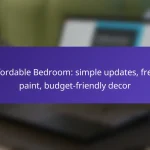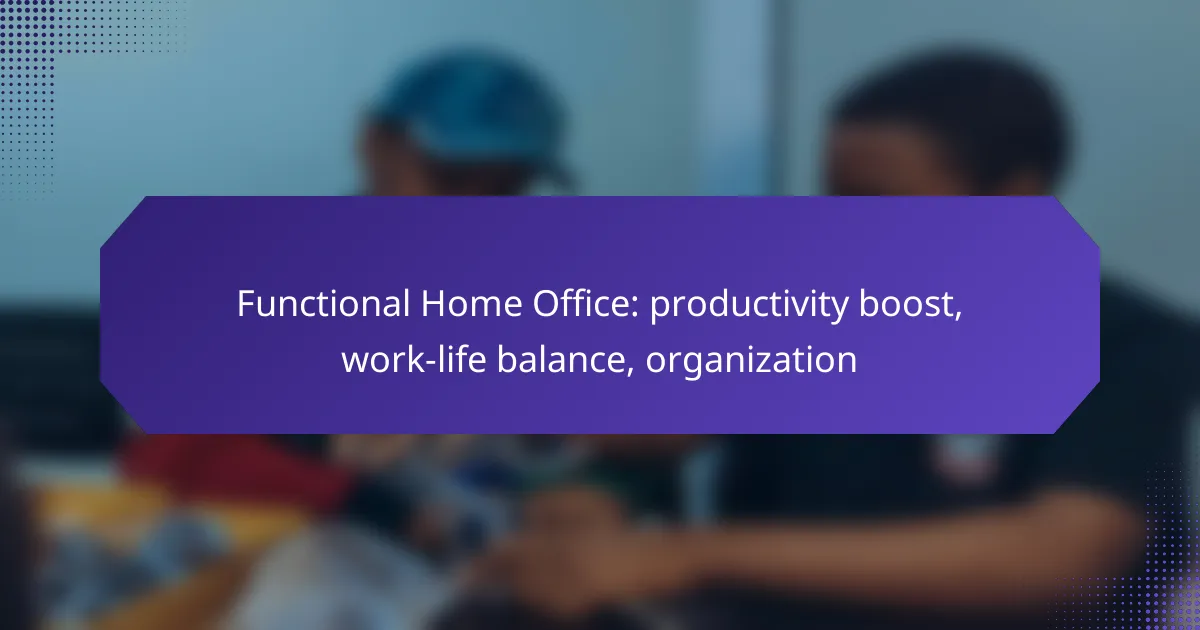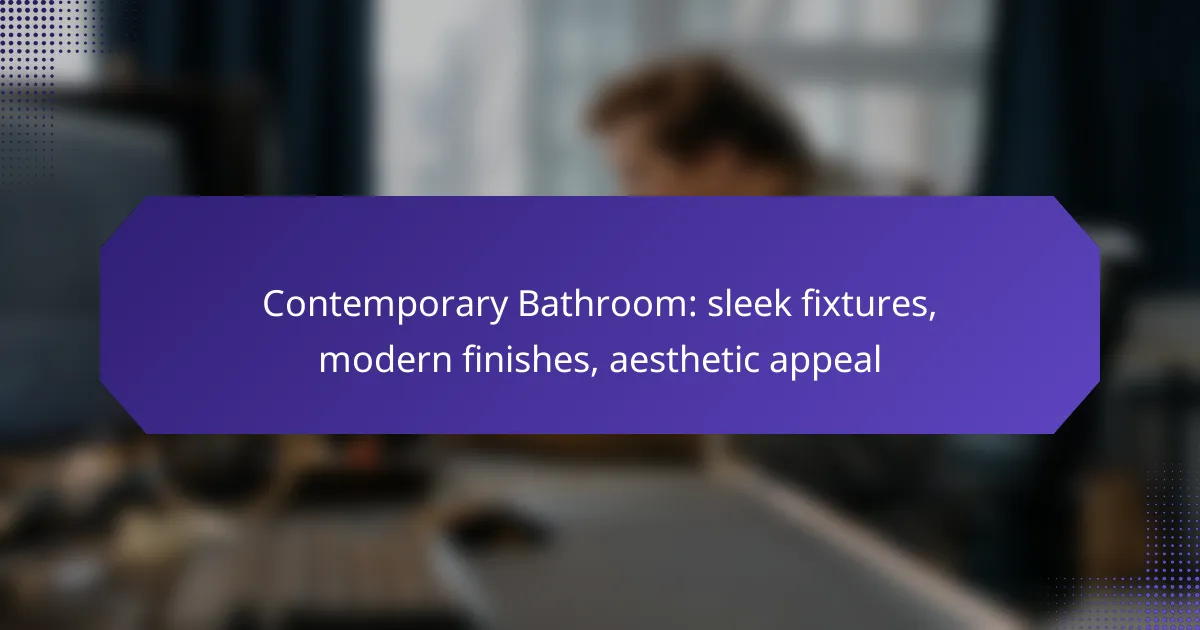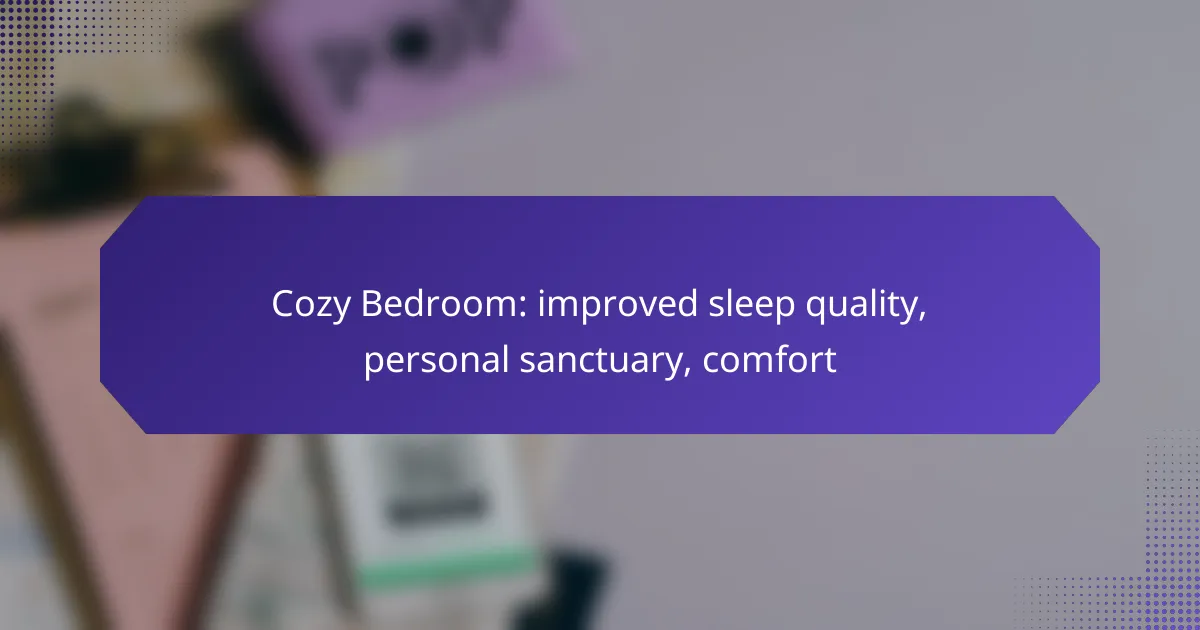A functional home office is key to boosting productivity and achieving a healthy work-life balance. By creating a dedicated workspace that minimizes distractions and investing in the right tools, individuals can enhance their efficiency and overall well-being. Establishing boundaries and organizing the space effectively are crucial steps in maintaining focus and clarity in both professional and personal realms.

How can a functional home office boost productivity in Canada?
A functional home office can significantly enhance productivity in Canada by creating an environment that minimizes distractions and promotes focus. By investing in the right tools and design, individuals can achieve a better work-life balance and improve their overall efficiency.
Ergonomic furniture for comfort
Ergonomic furniture is essential for maintaining comfort during long work hours. Chairs that support the lower back and desks at the correct height can prevent strain and fatigue. Consider adjustable desks that allow for both sitting and standing to promote better posture and circulation.
In Canada, look for furniture that meets ergonomic standards, such as those certified by the Canadian Standards Association (CSA). This ensures that your workspace is not only comfortable but also conducive to productivity.
Effective lighting solutions
Proper lighting is crucial for reducing eye strain and enhancing focus. Natural light is ideal, so position your desk near a window if possible. If natural light is limited, invest in adjustable LED lamps that mimic daylight and reduce glare on screens.
Consider using task lighting, which directs light to specific areas without illuminating the entire room. This can help maintain a comfortable atmosphere while keeping your workspace bright and inviting.
Noise-canceling technology
Noise-canceling technology can significantly improve concentration by minimizing distractions from the surrounding environment. Headphones with active noise cancellation are effective for blocking out background noise, especially in shared living spaces.
For a more permanent solution, consider soundproofing your office area with acoustic panels or heavy curtains. These additions can create a quieter workspace, allowing for deeper focus and increased productivity.
Task management tools
Task management tools help organize daily responsibilities and prioritize tasks effectively. Software like Trello or Asana can streamline project tracking and ensure deadlines are met. These tools often include features for collaboration, which can be beneficial if you work with a team remotely.
Incorporate a simple to-do list system, either digital or on paper, to keep track of daily tasks. This can help you maintain clarity and focus throughout the workday.
Personalized workspace design
A personalized workspace design can enhance motivation and creativity. Incorporate elements that reflect your personality, such as artwork, plants, or inspiring quotes. These personal touches can make your office feel more inviting and enjoyable to work in.
Consider the layout of your workspace as well. Ensure that everything you need is within reach and that the space is organized to minimize clutter. A well-designed workspace can lead to improved focus and productivity over time.

What are the best practices for work-life balance in a home office?
To achieve a good work-life balance in a home office, it is essential to establish boundaries that separate professional responsibilities from personal life. This can be accomplished through structured work hours, a designated workspace, regular breaks, and the use of productivity tools.
Setting clear work hours
Establishing clear work hours helps to define when you are “on the clock” and when you are not. Aim for consistent start and end times each day, which can range from 9 AM to 5 PM or any schedule that suits your lifestyle. Communicate these hours to colleagues and family to minimize interruptions during work time.
Consider using a calendar to block out your work hours and include reminders for breaks. This practice can help reinforce your schedule and signal to others when you are available for meetings or social interactions.
Creating a dedicated workspace
A dedicated workspace is crucial for maintaining focus and productivity. Choose a specific area in your home that is free from distractions and equipped with the necessary tools for your job. This could be a spare room, a corner of your living room, or even a well-organized desk in your bedroom.
Ensure your workspace is comfortable and ergonomic, with proper lighting and seating. Personalize it with items that inspire you, but avoid clutter that can lead to distractions. A well-defined workspace can help signal to your brain that it’s time to work.
Implementing regular breaks
Regular breaks are vital for maintaining productivity and mental well-being. Aim to take short breaks every hour, lasting about 5 to 10 minutes, to stretch, hydrate, or step outside for fresh air. This can help reduce fatigue and improve focus when you return to your tasks.
Consider using techniques like the Pomodoro Technique, which involves working for 25 minutes followed by a 5-minute break. This structured approach can enhance your efficiency and prevent burnout over long work sessions.
Using productivity apps
Productivity apps can significantly enhance your work-life balance by helping you manage tasks and time effectively. Tools like Trello, Asana, or Todoist can assist in organizing your projects and setting deadlines. These applications can also facilitate collaboration with team members, keeping everyone on the same page.
Additionally, time-tracking apps like Toggl or Clockify can help you monitor how much time you spend on various tasks, allowing you to identify areas for improvement. Choose apps that integrate well with your workflow and are user-friendly to maximize their benefits.

How to organize your home office effectively?
To organize your home office effectively, focus on creating a space that enhances productivity and maintains a clear work-life balance. This involves decluttering, utilizing storage solutions, implementing digital organization tools, and applying color coding for efficiency.
Decluttering strategies
Start by removing unnecessary items from your workspace to create a more focused environment. Use the “one in, one out” rule: for every new item you bring in, remove an old one. Regularly assess your belongings to keep only what is essential for your work.
Consider categorizing items into three groups: keep, donate, and discard. This will streamline the decluttering process and help you make quick decisions about what to retain.
Storage solutions for small spaces
Maximize your small office space by using vertical storage options like shelves and wall-mounted organizers. These can free up desk space and keep essential items within reach. Use multi-functional furniture, such as desks with built-in storage or ottomans that double as storage bins.
Invest in clear bins or drawer organizers to keep supplies sorted and easily accessible. Labeling these containers can further enhance organization and efficiency, making it simple to find what you need quickly.
Digital organization tools
Utilize digital tools like project management apps and cloud storage to keep your work organized. Applications such as Trello or Asana can help you track tasks and deadlines, while Google Drive or Dropbox allows for easy access to documents from anywhere.
Regularly back up your files and maintain a clean digital workspace by organizing folders logically. Consider setting aside time each week to review and tidy your digital files to prevent clutter from accumulating.
Color coding for efficiency
Implement color coding to streamline your organization and improve efficiency. Use different colors for folders, labels, or sticky notes to categorize tasks, projects, or priorities visually. This method can help you quickly identify what needs attention at a glance.
Choose a consistent color scheme that makes sense for your workflow. For example, use red for urgent tasks, green for completed projects, and blue for ongoing work. This visual system can enhance your focus and productivity in your home office.

What are the essential tools for a functional home office?
A functional home office requires a combination of technology and supplies that enhance productivity and maintain organization. Key tools include a reliable internet connection, effective collaboration software, secure cloud storage, and essential office supplies.
High-speed internet connection
A high-speed internet connection is crucial for seamless communication and efficient work. Aim for a minimum download speed of 25 Mbps to support video calls and large file transfers without interruptions.
Consider options like fiber optic or cable internet, which typically offer the best performance. Regularly test your speed to ensure it meets your needs, and consider upgrading if you experience lag during important tasks.
Collaboration software like Zoom
Collaboration software, such as Zoom, is essential for virtual meetings and team communication. These platforms allow for video conferencing, screen sharing, and chat functionalities, making remote collaboration effective.
Choose software that integrates well with your existing tools and offers features like recording and breakout rooms. Familiarize yourself with the platform’s capabilities to maximize its use during meetings.
Cloud storage options
Cloud storage solutions, like Google Drive or Dropbox, provide a secure way to store and share files. They allow access from any device, which is vital for remote work flexibility.
Look for services that offer sufficient storage space and robust security features. Regularly back up your important documents to prevent data loss and ensure easy retrieval when needed.
Office supplies checklist
Having the right office supplies can significantly enhance your work efficiency. Essential items include a comfortable chair, desk, stationery, and organizational tools like file folders and planners.
- Ergonomic chair
- Adjustable desk
- Notebooks and pens
- File organizers
- Post-it notes
Regularly assess your supplies and restock as needed to maintain an organized workspace that supports productivity.

What criteria should you consider when designing a home office?
When designing a home office, prioritize functionality, comfort, and organization to enhance productivity and maintain a healthy work-life balance. Consider factors such as space utilization, ergonomic furniture, and efficient storage solutions to create an effective workspace.
Space utilization
Effective space utilization is crucial for a productive home office. Assess the available area to determine how to best arrange furniture and equipment, ensuring that everything you need is within reach while minimizing clutter.
Consider using vertical space for storage, such as shelves or wall-mounted organizers, to keep the floor area open and free. Additionally, multifunctional furniture, like a desk with built-in storage, can help maximize the use of limited space.
When planning your layout, think about the flow of movement. Ensure there is enough room to move around comfortably, and avoid placing large items in high-traffic areas. A well-organized space can significantly enhance your focus and efficiency while working from home.










